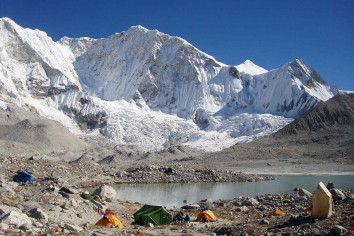Lhakpa Ri Expedition - Trip Highlights
- Retracing the footsteps of legend George Mallory on Rongbuk Glacier.
- Ideal mountain for climbers who only have a few 6,000 metres summit experience.
- Sharing a common base camp of Everest on the Tibetan side, a route to Everest North Col.
- Popular 7,000 metres climbing peak with technically less demanding.
- Climbing the summit of Lhakpa Ri is best for viewing Everest, Lhotse, and Nuptse from proximity.
- Less steep ridges, snow-filled ice slopes, and low angled glaciers.
- Experience the fascinating lifestyle of Tibetan people.
Lhakpa Ri Expedition - Trip Overview
The Tibetan plateau, attached to Nepal, is rich in 7,000 metres of mountains. Even Everest's stunning North Col lies in Tibet. One among 7,000 metres climbing the peak is Lhakpa Ri, a recent hotspot for intermediate mountaineers. This newly goto place for climbers in Tibet is a favourite because of its easy summit climb. On top, climbing Lhakpa Ri gives the chance to explore the heart of the Himalayas without involving the arduous expedition of 8,000 metres peak. This cousin peak of Everest offers the experience of climbing Everest via Rongbuk Glacier in the East.
Climbing Lhakpa Ri is comfortable compared to many 7,000 metres peaks. Even being next to Everest, the entire climb of Lhakpa Ri Peak is moderate grade. Hence, intermediate climbers find this 7,000 metres mountain ideal for sharpening climbing skills. The glaciers and ice ridges on Lhakpa Ri climbs are around 30 - 35 degrees steeper. The 300 metres rope section from Everest Base Camp to North Col requires climbers to climb using the fixed-line. The intermediate High Camps at 5,800 metres and 6,35o metres make the climbing comfortable. Thus, with fitness and adequate climbing skills, summiting Lhakpa Ri is not much arduous.
Lhakpa Ri, at 7,045 metres, the gigantic towering peak of Tibet, soars, splitting two prominent Tibetan glaciers, Upper Kharta and East Rongbuk. Lying close to Everest, the summit of Lhakpa Ri offers immaculate glimpses of Everest, Makalu at 8,463 metres, Changtse at 7,543 metres, Sishapangama at 8,027 metres, and Cho Oyu at 8,188 metres. On top, Lhotse's east face, Everest's north ridge, North Col, Pethangtse, east Kangshung of Everest, and Chomolomzo on the north, are completely visible from the summit of Lhakpa Ri peak. Also, the distinguished range in Tibet, Nyonno Ri, is distinctive from the Lhakpa Ri summit.
History of Lhakpa Ri Expedition
In 1921, George Mallory, a pioneer of the Everest expedition, first summited Lhakpa Ri at 7,045 metres. Mountaineers believe that he managed to reach the North Col of Everest on his multiple attempts of Everest climb. Later, in 1936, Bill Tilman, an English mountaineer, climbed Lhakpa Ri on his Everest expedition. Later, during the successful Everest summit of 1988 and 1991, Michelle Pella and Ken McConnell scaled the Lhakpa Ri summit. Still, climbers to this peak follow the route discovered by these legendary mountaineers.
Lhakpa Ri Expedition - Trip Itinerary
The best part of the Lhakpa Ri expedition is that we don't have to hike much to Everest Base Camp from the Chinese Base Camp. From the Tibetan side, the well-constructed road has made the expedition easier. Instead of flying to Lhasa, we'll take a roadway.
Lhakpa Ri Peak's expedition for 35 days begins as we drive from Kathmandu to Syabrubesi. We'll reach the Kerung border from Syabrubesi on the drive and have all necessary permit checks. From Kerung, we'll take a drive to Kerung Height, at 3,200 metres.
We'll drive to Tingri from Kerung for 3 hours and stay overnight here. We'll acclimatise at Tingiri by climbing 5,000 metres on a hilltop for an inspiring view of Cho Oyu.
We'll drive to Chinese Base Camp for 4 hours and stay overnight the next day. At 5,150 Chinese Base Camp, we need another acclimatisation.
Our expedition team manages Yaks for logistics while we prepare for a hike to Advanced Base Camp. We'll first hike to Middle Camp at 5,700 metres for 6 hours and to Advanced Everest Base Camp. We'll spend around two weeks at Advanced Camp during the climbing period.
After a successful Lhakpa Ri summit, we'll hike down to Advanced Base Camp and clean it thoroughly. We at World Expedition Nepal practice eco-expedition on the Himalayas. We believe our valued clients support the cleanliness campaign of Base Camp after a successful expedition.
We'll return to Kathmandu following the Kerung-Kathmandu roadway route.
Lhakpa Ri Expedition - Physical Fitness
Lhakpa Ri peak is technically a less demanding 7,000 metres peak. Thus, intermediate climbers find this peak comfortable to the summit. But, some steep sections of ice and snow near the summit climb make the climb arduous. Climbing Lhakpa Ri involves walking on a fixed-line. So, climbers with some 6,000 metres of peak climbing experience can master these skills.
Physical fitness is a must for the Lhakpa Peak expedition. You have to be fit for longer climbing hours, routine climbs, and two weeks long climbing periods. Since we design this expedition with the most acclimatisation, you'll get proper rest. Also, our logistic team ensures your good health, healthy meals, and comfortable overnights.
Accommodations in Lhakpa Ri Expedition
We'll be accommodating camping style for most of the Lhakpa Ri expedition.
Before and after the expedition in Kathmandu, you can stay at the hotel of your preference. The service you get depends on how expensive the hotel you stay in.
On expedition, till Tingri, we'll be accommodating in tea houses. Tea houses en route offer healthy meals with a Tibetan touch. You can also try Tibetan foods like dumplings, noodles, and other foods. You'll also get western foods in these menu items.
At Chinese Base Camp and Advanced Camp, our logistic teams will set up accommodations. You'll get nutritious meals and comfort overnight throughout the climbing period. But, you have to accommodate on a twin sharing basis in tented camps.
Why World Expedition Nepal for Lhakpa Ri Expedition?
World Expedition Nepal focuses on and promotes peak climbing and expeditions in Nepal. We have been providing tour services since 2017 by registered and licensed under Nepal Government. In the Tibet expeditions, we'll make sure that you'll have complete joy alongside the adventure of high-altitude climbing.
Our professional and experienced guides will ensure your utmost comfort and safety on Lhakpa Ri climbing. We'll make this tour an unforgettable experience for you. Also, the health and safety of our clients is our primary motto. Our guides for these expeditions have mountain skills certification. They come with expertise in mountain medicine, first aid, and rescue operations.
We have fixed departures for the Lhakpa Ri expedition for Autumn 2022 and Spring 2023. Book your trip with us and experience the thrill of climbing this 7,000 metres peak.

 Recommended On
Recommended On
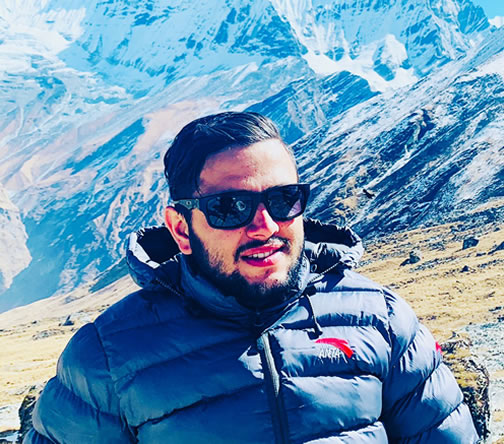
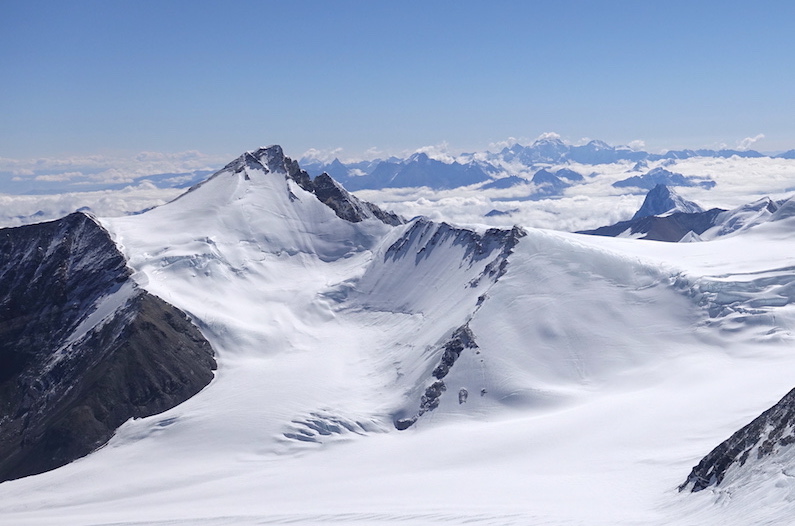



 7000m Peak Climbing , Nepal
7000m Peak Climbing , Nepal  26 Days
26 Days  US$9500
US$9500

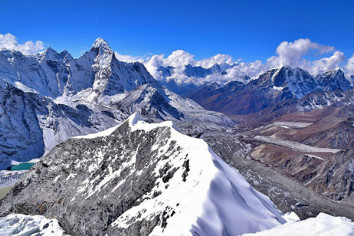
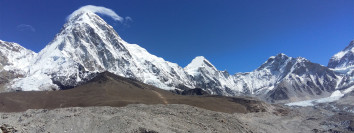


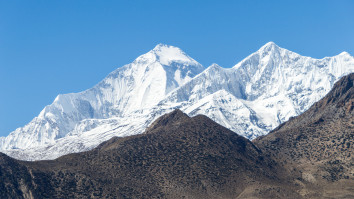
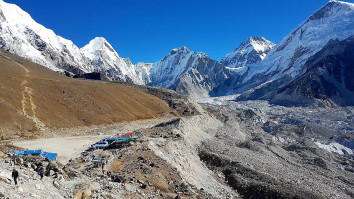
.jpg)
